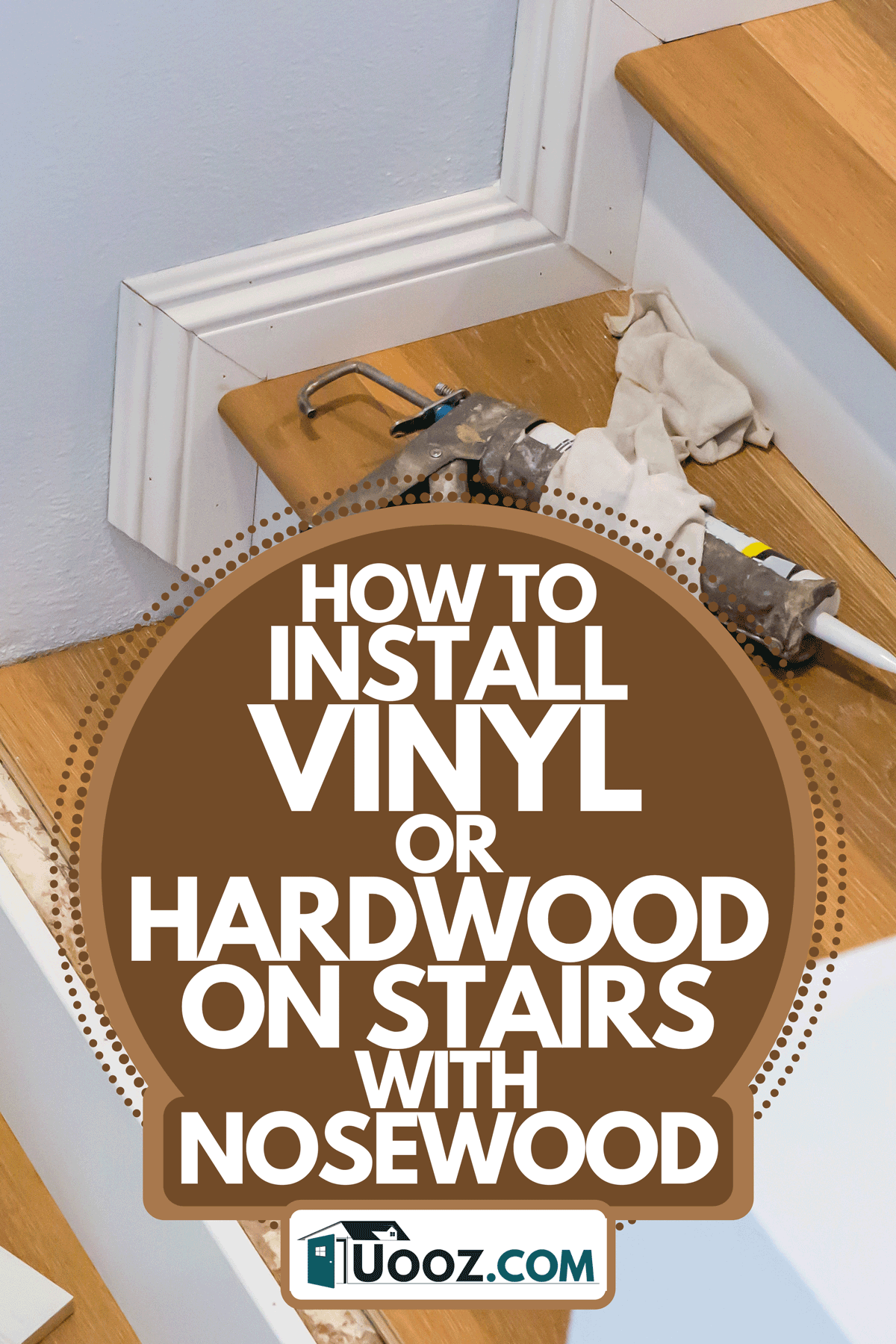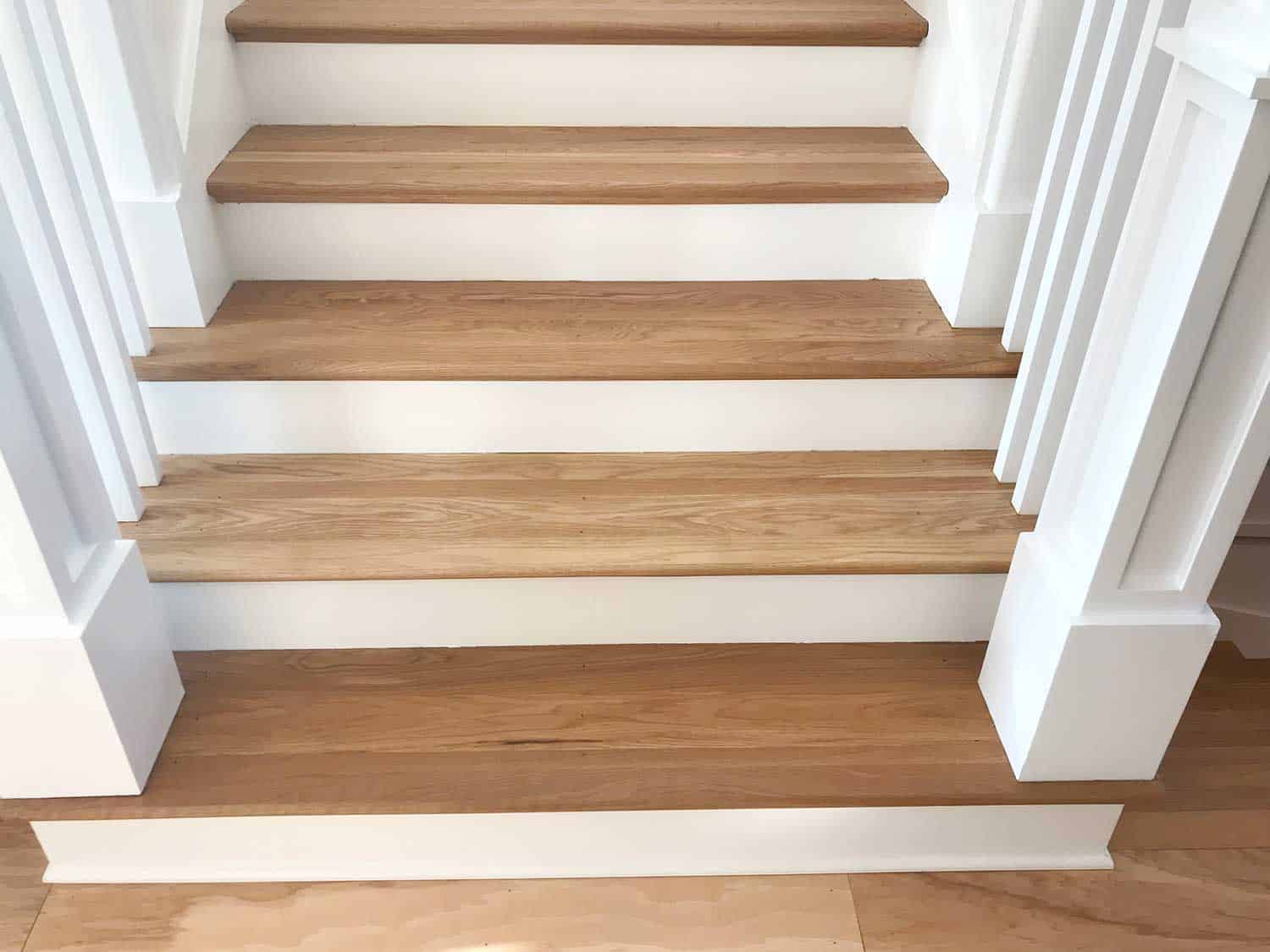Are you planning to build your new house? Or, are you thinking of renovation? Stairs can have a classy style statement with a premium staircase finish. Do you want to install vinyl or hardwood nosing on your stairs? If you need assistance, we have researched the issue and found some answers.
Installing vinyl or hardwood stair nosing on stairs can be performed by hired professionals. However, if you're planning to do it yourself, you will need the necessary tools for your situation. The standard method of installing both hardwood and vinyl nosing on staircases is:
- Start from the bottom and work your way up the stairs
- Measure the length of the planks, nosewood, and stairs.
- To continue, measure the width of the surface and the riser for the next step.
- Glue the nosewood and planks with a construction adhesive.
- Fill the remaining gaps with silicone or any other sealant using a caulk gun.
- Repeat steps 1-5 for the rest of the stairs.
Installing vinyl and hardwood nosings or planks is a delicate process. It requires the exact dimensions of the staircase and requires care along with precision. Below, we have discussed everything from the structure to the problems you may face. For a detailed guide to installing nosings, keep reading ahead.

The Structure Of A Stair And Nosing
Before starting work, you need to have a clear idea about the structure of a staircase to have the best results. Three components make up a staircase.
- The Tread
- The Riser
- The Nose
The Tread
The tread is the uppermost part of a stair. It is where you position your foot and step to go up. The upper half has a flat, smooth surface.
The Riser
The area beneath the tread and the nose is known as the riser. It connects the tread with the nosing and supports the overall structure of the staircase.
The Nose
The nosing is an extended piece of wood or metal that gives the stairs some extra space. It helps a person to keep balance while climbing.
Problems And Issues Faced By Nosing
The first problem nosing can cause is that it doesn't hold up against wet and greasy surfaces. It becomes a safety hazard when exposed to wet conditions. Even though the nosing protects the stair, it becomes a slip hazard for people. The same happens with oily conditions. Therefore, it is essential to clean grease and water off the stairs.
The second problem that it may be subject to is that damage and weathering due to heavy traffic, for example, stair nosing in offices, will be damaged due to the movement of equipment. The same will happen in houses where there is a constant movement of luggage. This heavy traffic not only makes it a safety hazard but also causes a loss of money. The monetary loss is noticeable if the nosing uses expensive materials.
Thirdly, you need to install the nosing properly. It should not stick out or have a loose finish. Otherwise, it will come off by foot traffic or moving equipment. It is better to ensure that it is fixed adequately and is made of sturdy material to preserve the look of the staircase.
Installing Vinyl Or Hardwood Stair Nosing

Previously, we mentioned a set of instructions related to stair nosing and plank application. These steps include several details that need consideration before you begin your work.
The Dimensions
The dimensions of the stair planks and nosing have to be measured precisely beforehand. This way, you avoid having disproportionate stairs. A general rule of thumb indicates that you install planks and nosing according to the standard staircase dimensions and angles.
A standard staircase has a width ranging between 36 inches and 44 inches. Therefore, the planks should also be cut and altered according to this size. The staircase tread and risers are almost 112-114 cm in length. Since all the stairs in your staircase are equal in size, we advise that you make reference planks and continue with the same height and width as you proceed.
The nosewood on the stairs should be carefully measured. As for solid risers, the nosewood must project between 0.75'' and 1.25'' and should be uniform between two steps. It must have minimal variations, approximately between 0.375 inches. A 1-2 degree angle is acceptable. The nosewood may slope downwards for safety measures.
The radius of curvature for the stair nosing should not exceed 9/16 inches or 14.3 mm. A nosing no lesser than ¾ inches or 19 mm and not more than ¼ inches or 32 mm is required. The thickness can vary between 1-1 1/16th of an inch, which is the universal thickness for a staircase tread. The nosewood may measure approximately 11 inches.
The Material
Since you are working with vinyl or hardwood, we recommend using high-quality vinyl or hardwood products for the nosewood. There are pre-made nosings available at hardware stores. However, we suggest doing it yourself.
High-quality vinyl nosing and planks may cost between $6 and $10. High-quality hardwood may cost up to $6 to $12. Quality hardwood nosing and planks are also known as "Luxury Engineered" and "Old Growth" products indicating a high wood quality.
Construction Adhesive
The most important aspect of the project is using a high-quality construction adhesive. Use a product that contains polyurethane as the adhesive agent.
Click here to see this adhesive on Amazon.
For example, this adhesive held 115 pounds of wood in a test. It is better to look closely at how well they work. Otherwise, you will run into trouble if it isn't strong enough to hold.
Installation Process
Getting Started
Get rid of all previous protrusions on existing surfaces of the staircase, or the nosewood and plank will come off later. Then proceed to start /with the lowest riser and work your way up the treads. Make sure that your workspace is clear from all unnecessary items. Use an 80 tooth blade to cut the nosewood evenly and then smoothen the surface of the nosewood.
Making The Base
Cover the entire riser and tread with a plank of hardwood or vinyl. As we mentioned earlier, measure as tight as possible. If the flooring is not wide enough, then the next stair nosing may cover it up.
Make a sample nosing strip and plank and use it as a reference. The treads and risers should have a uniform density to install the nosewood. The planks use tongue and groove systems in an interlocking technology and join together from the treads to risers via the nosewood.
Fixing The Nosewood And Planks
Apply a coat of construction adhesive on the treads and riser. Place the plank and nosing separately. Keep in mind that the construction adhesive takes a lot of time. You should leave it for at least 2-3 hours before restarting work.
With vinyl and hardwood, apply an even coat. You can also use screws and drills to attach nosings along with the adhesive for a better grip. Keep the angle to around 1.5 degrees and attach the nosewood a little lower. Removable locks are available to fix nosings onto the stairs. You can use them too.
Using A Caulk Gun To Seal The Deal
To finish it off, use a caulk gun with a silicone sealant to seal any remaining spots since they are susceptible to damage. If a caulk gun is not applied to close the remaining places, water or other elements may seep through and damage the nosewood.
Safety Precautions
When working, wear latex gloves when you apply adhesives as the glue can stick to your hands. The adhesive contains certain toxic chemicals, don't forget to wear a mask. While cutting the planks and nosing, use the saw machine carefully. Wear protective glasses to protect yourself from bits of wood and sawdust.
For a visual guide, here is a Youtube to help:
Do stairs require nosing?
Nosing is necessary if your stair treads are at least 11 inches in width and vice versa. However, if you are looking to protect your staircase from damage, then we recommend installing nosewood on your stairs.
Which is the best vinyl for stairs: plank vs. sheet?
Vinyl comes in many types. The most popular by far is the sheet style as well as the plank style. Both come with pros and cons that we will discuss below:
Price
Vinyl sheets are produced in bulk in large sheets with printed designs and shapes that resemble wood. Vinyl sheets can be after cutting according to your needs. They cost around $10 per sq. On the other hand, vinyl planks are separate planks manufactured by carving long planks known as "Luxury Vinyl" sets and cost more than vinyl sheets, approximately $30.
Durability
Both the sheet and planks are highly resistant to heavy traffic and water. However, a vinyl sheet provides more protection since it is a singular sheet. Contrary to vinyl planks which have grooves that leave the subfloor unprotected.
Repairability
The vinyl plank wins here since it is--- a plank. You can change it singularly without changing the entire flooring. On the contrary, the vinyl sheet, when damaged, has to be changed with a new sheet that costs more than maintaining vinyl planks.
In the end, vinyl planks are better than vinyl sheets since they have a lower repair cost. The chances of water seeping in through the seam are rare as the vinyl plank is water-resistant.
Are hardwood stairs worth it?
Installing hardwood stairs on your staircase may seem beautiful for the looks, but it comes at a price. Hardwood stairs do not have a long lifespan. For bare hardwood stairs, this is especially true. They might look good. But their constant use will cause them to lose their shine gradually.
Since the stairs use hardwood, they also become a colony for termites and other insects. Hardwood is also vulnerable to water seepage and other elements that can make it a hazard, especially for the elderly. Hardwood stairs require constant attention and are not worth the money if you're on a budget.
Final Takeaway
In the end, it is up to you to make a final decision. We have provided you with all the necessary details you need before making a decision. We hope you found the information above informative. Good luck!
Before you go, are you curious if hardwood floors should match throughout the house? If you want answers, check out our post here. And, if you are wondering if you can buy pre-made stairs, check out our post here. Until next time!

